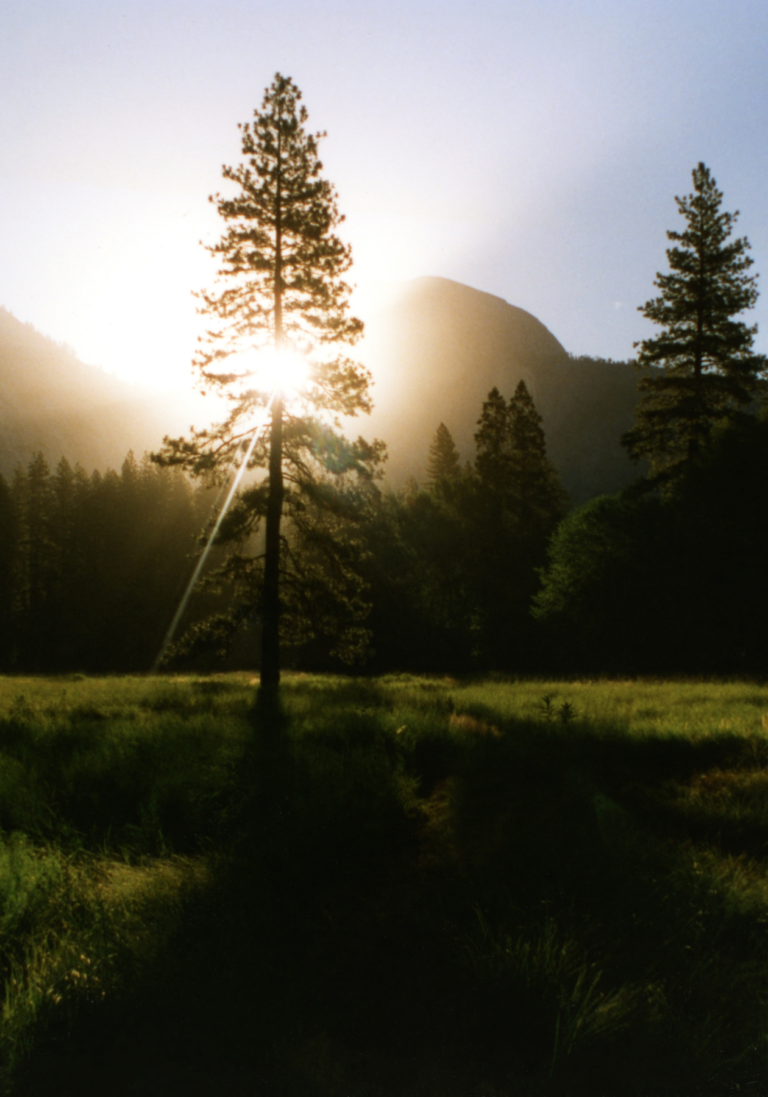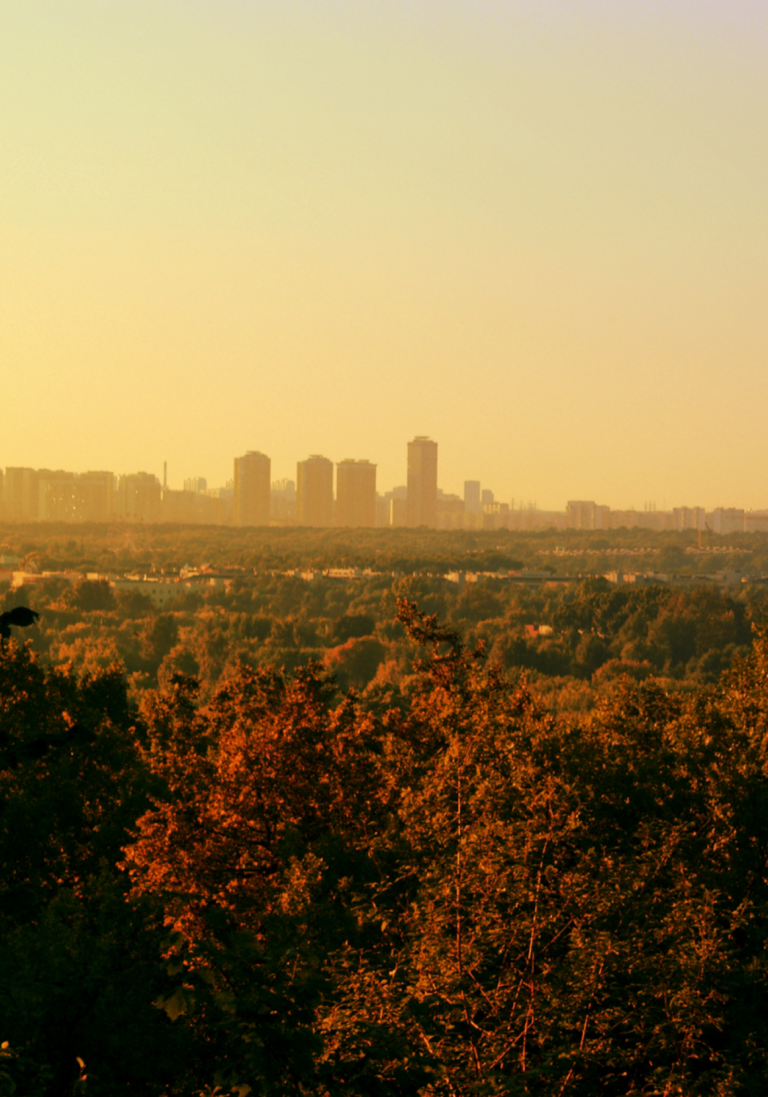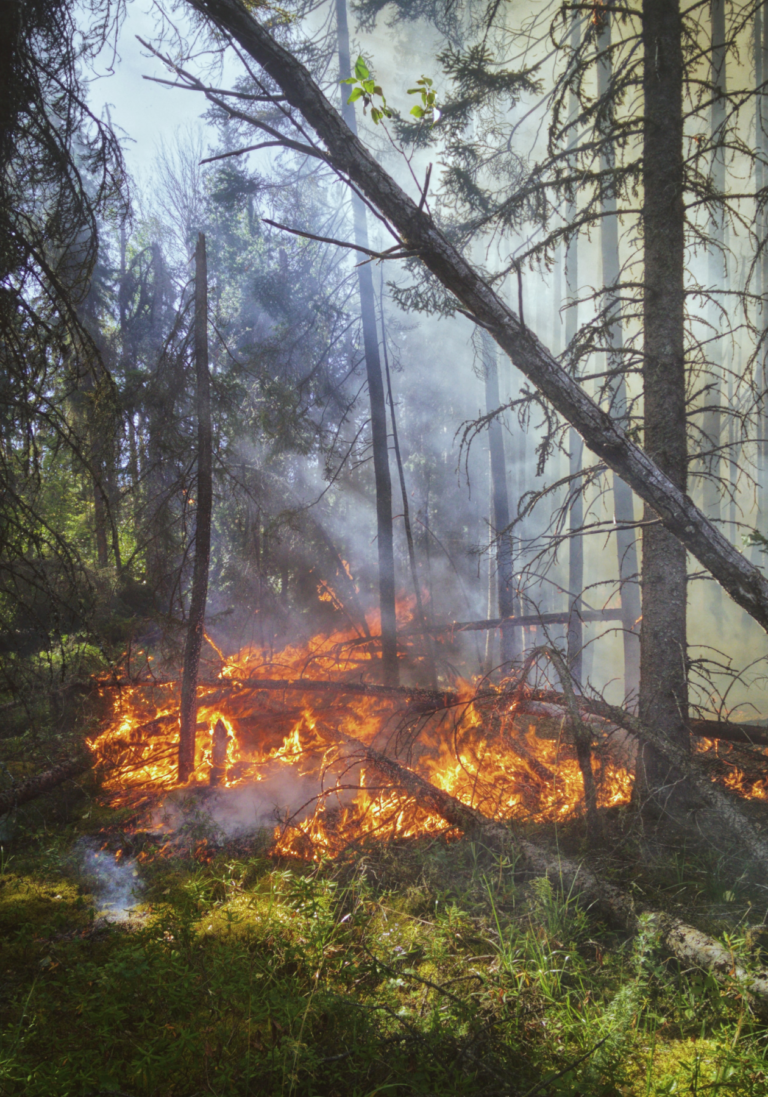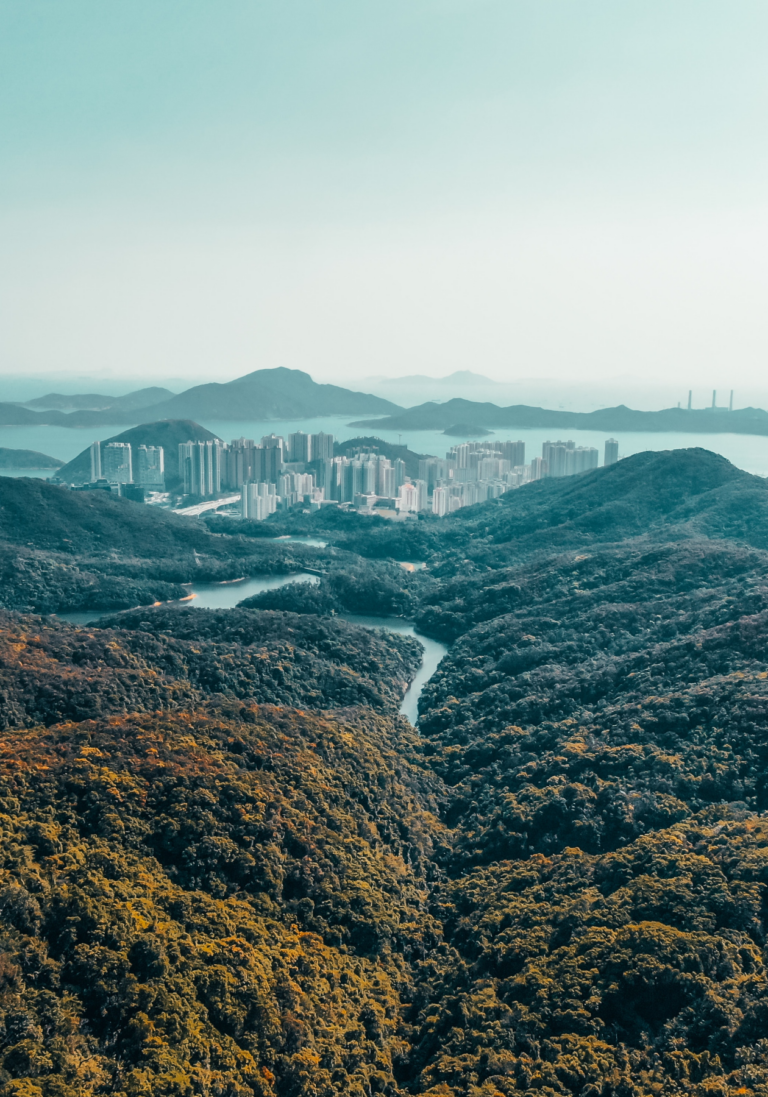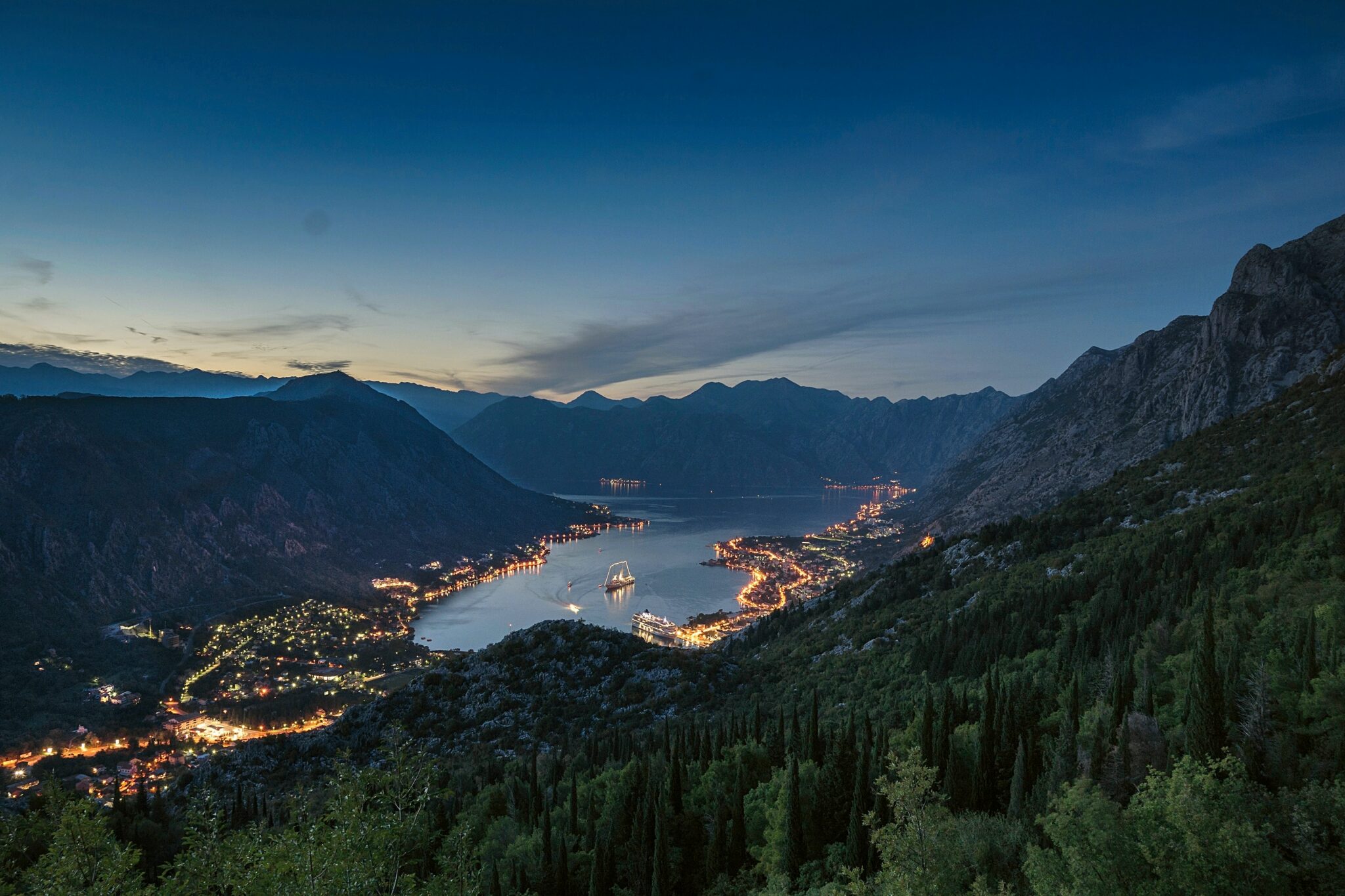Stability
Understanding how the physical world works is one of humanity’s greatest achievements. How can we use this knowledge to navigate a changing climate?
- Devika Bakshi
The first humans were born into a difficult environment. Over tens of thousands of years, the earth’s climate kept changing, with gradual shifts from very cold to mild. Wherever our ancestors went, they lived in relationship to the forces of nature, aware and engaged in the physical world.
There are still communities of people on Earth today who observe ancient traditions and maintain a deep connection with their surroundings, but most people turned away from this kind of intimacy with the natural world. What prompted our ancestors to stop moving, settle, and develop infrastructure and agriculture? A miraculous bit of good fortune.
Around 12,000 years ago, the climate stabilized, and almost no place on Earth was too hot or too cold for humans to live and thrive. Since then, there have been variations in temperature and precipitation from year to year, but the averages stayed the same, as did the extremes. Keeping records of temperatures, rainfall, storms, tides, and seasons allowed us to anticipate what was most likely and know what rare events to guard against. We came to count on these regular patterns and built civilizations around them thousands of years before anyone understood why the climate was stable.
Assumptions of a stable climate are now built into everything around us. Farmers and city dwellers in dry regions rely on distant mountain snowmelt for irrigation and drinking water. Some communities migrate during the year to follow predictable patterns of weather and animal migrations for sustenance and survival. Power systems and roads are engineered to withstand a limited number of days above specific temperature thresholds. Every community has cultural touchstones, from specific foods at different times of the year to ceremonies, sporting events, and celebrations that rely on historical patterns of weather repeating.
The first humans were born into a difficult environment. Over tens of thousands of years, the earth’s climate kept changing, with gradual shifts from very cold to mild. Wherever our ancestors went, they lived in relationship to the forces of nature, aware and engaged in the physical world.
There are still communities of people on Earth today who observe ancient traditions and maintain a deep connection with their surroundings, but most people turned away from this kind of intimacy with the natural world. What prompted our ancestors to stop moving, settle, and develop infrastructure and agriculture? A miraculous bit of good fortune.
Around 12,000 years ago, the climate stabilized, and almost no place on Earth was too hot or too cold for humans to live and thrive. Since then, there have been variations in temperature and precipitation from year to year, but the averages stayed the same, as did the extremes. Keeping records of temperatures, rainfall, storms, tides, and seasons allowed us to anticipate what was most likely and know what rare events to guard against. We came to count on these regular patterns and built civilizations around them thousands of years before anyone understood why the climate was stable.
Assumptions of a stable climate are now built into everything around us. Farmers and city dwellers in dry regions rely on distant mountain snowmelt for irrigation and drinking water. Some communities migrate during the year to follow predictable patterns of weather and animal migrations for sustenance and survival. Power systems and roads are engineered to withstand a limited number of days above specific temperature thresholds. Every community has cultural touchstones, from specific foods at different times of the year to ceremonies, sporting events, and celebrations that rely on historical patterns of weather repeating.
What governs Earth’s climate
Sunlight carries energy toward Earth. Clouds reflect about ¼ of this energy back into space. Some energy is absorbed by the atmosphere, and the remaining half hits the surface of the earth. Snowy glaciers and Arctic Sea ice are highly reflective, while the dark blue ocean absorbs heat the way dark clothing does.
The absorbed energy heats the earth. Some of that heat radiates back toward space. Gases, including carbon dioxide (CO2) and methane (CH4), trap some of that heat. If they didn’t, nights would be incredibly cold.
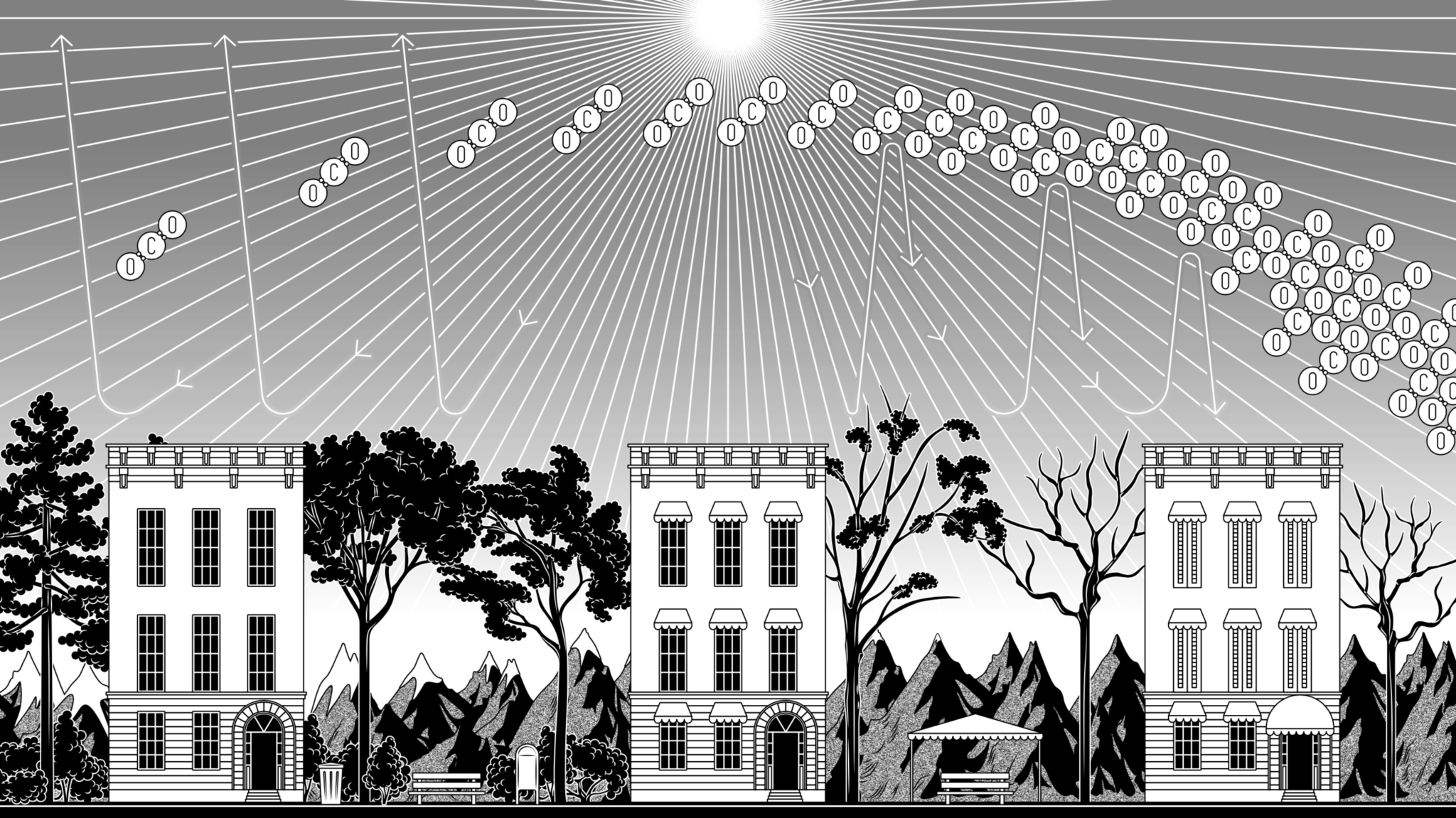
Credit: Berke Yazicioglu
Upsetting the balance
The glorious stability we rely on is being endangered by human activity, particularly the burning of fossil fuels. The amount of solar energy reaching the earth has been steady in recent decades, while atmospheric CO2 has increased dramatically, trapping more heat.
Perhaps the most straightforward example of the effects of more greenhouse gases is that nights, when the heat of the day dissipates, no longer cool off as much. For example, over the last 30 years in the United States, there have been twice as many instances of record-high nighttime temperatures as record-high daytime temperatures.
Warmer temperatures also disrupt seasonal patterns, with winter starting later and spring earlier. A poignant example of this lies in a seasonal and cultural event known throughout the world. For over 1,000 years, the people of Kyoto, Japan, have recorded the date at which the local cherry trees reach their peak blossom, which consistently occurred around April 15. In 2021, cherry blossoms in Kyoto peaked on March 26, earlier than any year in recorded history.
Warming doesn’t just change temperatures but all weather phenomena. Rising temperatures affect rainfall: When air warms by 1°C, it can hold 7% more moisture. Warmer air pulls more moisture from the land (and from plants, animals, and our bodies, in the form of sweat) and tends to release it more rapidly. As a result, both droughts and deluges are becoming more common.
Approaching tipping points
Over hundreds of millions of years, sunlight fueled plant growth, some of which was buried in swamps and seabeds and eventually compressed into carbon-rich coal, oil, and methane. Carbon is also locked in trees, plants, and soil and trapped in frozen land called permafrost in the Arctic.
When these stores are unlocked by heat, they release this ancient carbon, causing further warming. Accelerated warming can create large forest fires or thaw tundra, which releases yet more carbon and further increases warming—this is known as a biotic feedback loop.
Scientists who foresaw the consequences of increased greenhouse gases understood from the paleoclimate records that such feedback loops were a risk, but they seemed far away. Even ten years ago, most scientists believed such loops would not start below 2°C of warming. That is one of the reasons why many current climate models do not yet include this dynamic.
In the last few years, however, permafrost has begun to thaw at alarming rates, and forests have begun to burn in larger, hotter fires during more months of the year, including in places that rarely used to burn. The vast trapped stores of carbon are starting to be released into the atmosphere faster than natural processes can trap them. We thus stand to lose stability irreversibly. We are unprepared for this prospect.
Most considerations of the future assume that even if a warmer atmosphere poses challenges, temperatures will stabilize as soon as we stop emitting carbon, perhaps at 2.5°C or 3°C, or even 4°C above the stable temperatures we inherited. It’s an understandable assumption, as our recorded history made stability seem fundamental, but biotic feedback loops are already adding to human emissions and creating more momentum for warming and instability. Facing this unprecedented challenge requires a mindset that prioritizes risk. The good news is that we know the sources of rising risks and have the power to affect them.
Upsetting the balance
The glorious stability we rely on is being endangered by human activity, particularly the burning of fossil fuels. The amount of solar energy reaching the earth has been steady in recent decades, while atmospheric CO2 has increased dramatically, trapping more heat.
Perhaps the most straightforward example of the effects of more greenhouse gases is that nights, when the heat of the day dissipates, no longer cool off as much. For example, over the last 30 years in the United States, there have been twice as many instances of record-high nighttime temperatures as record-high daytime temperatures.
Warmer temperatures also disrupt seasonal patterns, with winter starting later and spring earlier. A poignant example of this lies in a seasonal and cultural event known throughout the world. For over 1,000 years, the people of Kyoto, Japan, have recorded the date at which the local cherry trees reach their peak blossom, which consistently occurred around April 15. In 2021, cherry blossoms in Kyoto peaked on March 26, earlier than any year in recorded history.
Warming doesn’t just change temperatures but all weather phenomena. Rising temperatures affect rainfall: When air warms by 1°C, it can hold 7% more moisture. Warmer air pulls more moisture from the land (and from plants, animals, and our bodies, in the form of sweat) and tends to release it more rapidly. As a result, both droughts and deluges are becoming more common.
Approaching tipping points
Over hundreds of millions of years, sunlight fueled plant growth, some of which was buried in swamps and seabeds and eventually compressed into carbon-rich coal, oil, and methane. Carbon is also locked in trees, plants, and soil and trapped in frozen land called permafrost in the Arctic.
When these stores are unlocked by heat, they release this ancient carbon, causing further warming. Accelerated warming can create large forest fires or thaw tundra, which releases yet more carbon and further increases warming—this is known as a biotic feedback loop.
Scientists who foresaw the consequences of increased greenhouse gases understood from the paleoclimate records that such feedback loops were a risk, but they seemed far away. Even ten years ago, most scientists believed such loops would not start below 2°C of warming. That is one of the reasons why many current climate models do not yet include this dynamic.
In the last few years, however, permafrost has begun to thaw at alarming rates, and forests have begun to burn in larger, hotter fires during more months of the year, including in places that rarely used to burn. The vast trapped stores of carbon are starting to be released into the atmosphere faster than natural processes can trap them. We thus stand to lose stability irreversibly. We are unprepared for this prospect.
Most considerations of the future assume that even if a warmer atmosphere poses challenges, temperatures will stabilize as soon as we stop emitting carbon, perhaps at 2.5°C or 3°C, or even 4°C above the stable temperatures we inherited. It’s an understandable assumption, as our recorded history made stability seem fundamental, but biotic feedback loops are already adding to human emissions and creating more momentum for warming and instability. Facing this unprecedented challenge requires a mindset that prioritizes risk. The good news is that we know the sources of rising risks and have the power to affect them.
Imagine and prepare
We all have the experience necessary to envision climate outcomes. Imagine hot, humid nights, melting ice, deluges instead of gentle rain showers, drought, and oddly warm winter days. We also understand our Earth and its systems well enough to make projections of what will happen in a warming world.
Over the past 40 years, climate models have accurately predicted the scope and scale of how our global climate would change. But even the best science available isn’t perfect, and the further our climate moves from its historical norm, the more difficult it becomes for climate models to project extreme conditions accurately. At their best, models give us a general vision of what is coming so that we can plan for the futures we probably cannot avoid. They may also motivate us to prevent the futures that could include unmanageable outcomes.
Climate models tell us at what concentrations of atmospheric CO2 and methane (CH4) different temperatures and weather conditions will occur. Therefore, instead of using the models to predict timing, we use them to ask: “What weather phenomena do the models predict at different levels of atmospheric warming, such as 1.5°C, 2.0°C, and 3.0°C?” This approach lets the models work as they are meant to and highlights that when—and if—the earth reaches different levels of warming depends on what we do.
When examining our interactive maps, consider connections across space. We have all seen weather move from one area to another. We have all felt how political, economic, and public health events that originate in one location can affect us far away. If you prepare your house for changes in the local climate, but your neighbors, city, or electric company don’t, are you prepared?
There are also many connections we can’t easily see that make the natural systems around us work, including animal migration patterns, the movement of nutrients through the air and water, and ocean currents. For these reasons, it is most useful to investigate climate change using global maps that allow you to zoom in on continents, regions, and local areas. If you only look at global maps, you miss important changes, but if you only consider local conditions, you are likely to miss important connections.
It begins with heat
We stand to lose something precious if greenhouse gas concentrations continue to grow. Heat will determine the future of our planet and our civilizations.
Imagine and prepare
We all have the experience necessary to envision climate outcomes. Imagine hot, humid nights, melting ice, deluges instead of gentle rain showers, drought, and oddly warm winter days. We also understand our Earth and its systems well enough to make projections of what will happen in a warming world.
Over the past 40 years, climate models have accurately predicted the scope and scale of how our global climate would change. But even the best science available isn’t perfect, and the further our climate moves from its historical norm, the more difficult it becomes for climate models to project extreme conditions accurately. At their best, models give us a general vision of what is coming so that we can plan for the futures we probably cannot avoid. They may also motivate us to prevent the futures that could include unmanageable outcomes.
Climate models tell us at what concentrations of atmospheric CO2 and methane (CH4) different temperatures and weather conditions will occur. Therefore, instead of using the models to predict timing, we use them to ask: “What weather phenomena do the models predict at different levels of atmospheric warming, such as 1.5°C, 2.0°C, and 3.0°C?” This approach lets the models work as they are meant to and highlights that when—and if—the earth reaches different levels of warming depends on what we do.
When examining our interactive maps, consider connections across space. We have all seen weather move from one area to another. We have all felt how political, economic, and public health events that originate in one location can affect us far away. If you prepare your house for changes in the local climate, but your neighbors, city, or electric company don’t, are you prepared?
There are also many connections we can’t easily see that make the natural systems around us work, including animal migration patterns, the movement of nutrients through the air and water, and ocean currents. For these reasons, it is most useful to investigate climate change using global maps that allow you to zoom in on continents, regions, and local areas. If you only look at global maps, you miss important changes, but if you only consider local conditions, you are likely to miss important connections.
It begins with heat
We stand to lose something precious if greenhouse gas concentrations continue to grow. Heat will determine the future of our planet and our civilizations.
